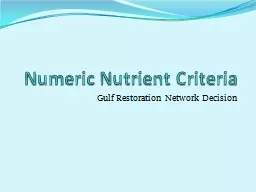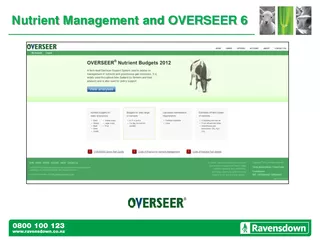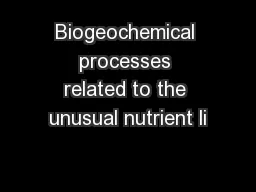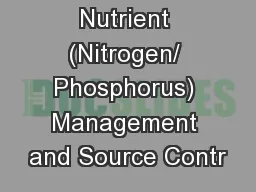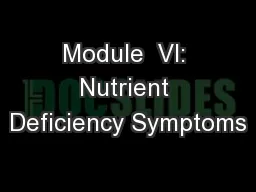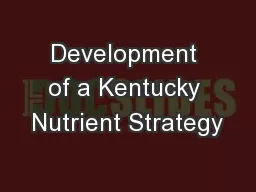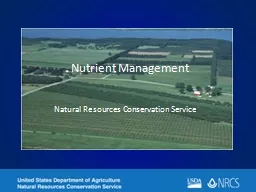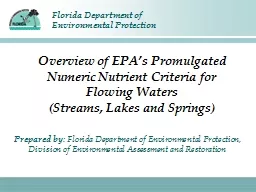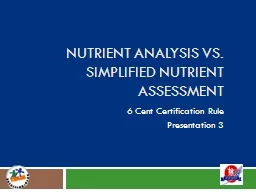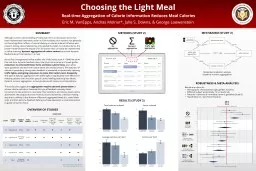PPT-Numeric Nutrient Criteria
Author : karlyn-bohler | Published Date : 2018-10-21
Gulf Restoration Network Decision Nutrients Nitrogen N Phosphorus P Sources include NPS fertilizermanure runoff septic tank overflow Point sources municipalindustrial
Presentation Embed Code
Download Presentation
Download Presentation The PPT/PDF document "Numeric Nutrient Criteria" is the property of its rightful owner. Permission is granted to download and print the materials on this website for personal, non-commercial use only, and to display it on your personal computer provided you do not modify the materials and that you retain all copyright notices contained in the materials. By downloading content from our website, you accept the terms of this agreement.
Numeric Nutrient Criteria: Transcript
Download Rules Of Document
"Numeric Nutrient Criteria"The content belongs to its owner. You may download and print it for personal use, without modification, and keep all copyright notices. By downloading, you agree to these terms.
Related Documents

